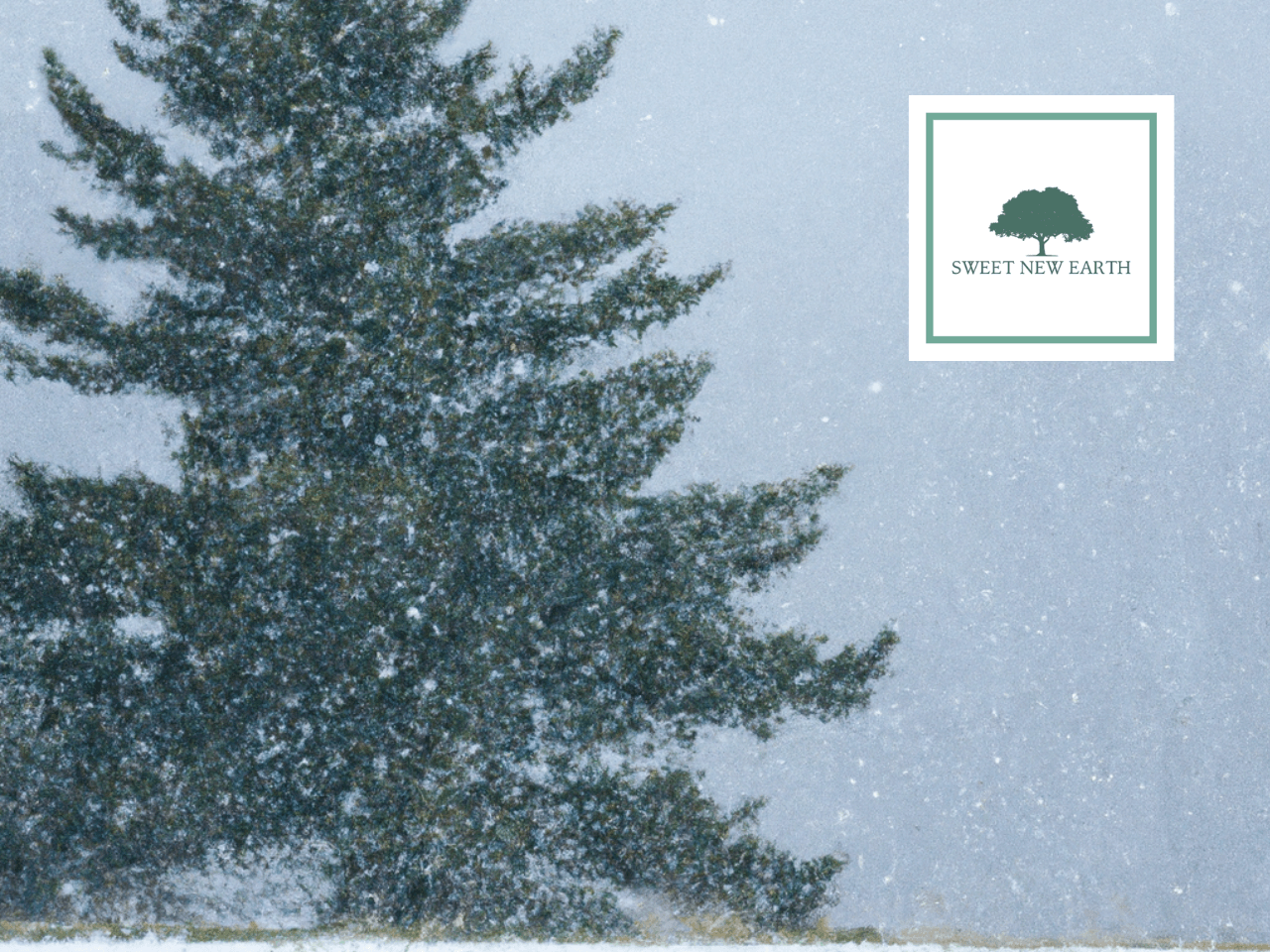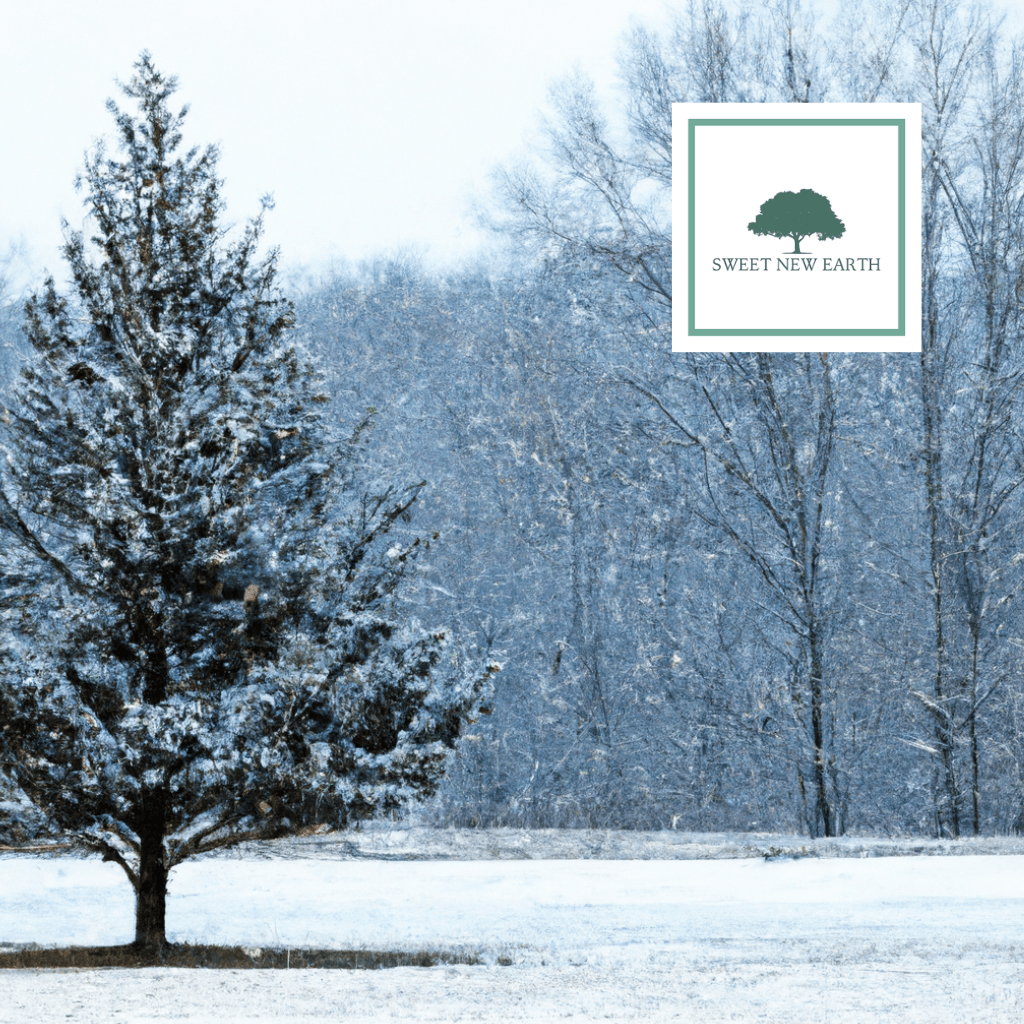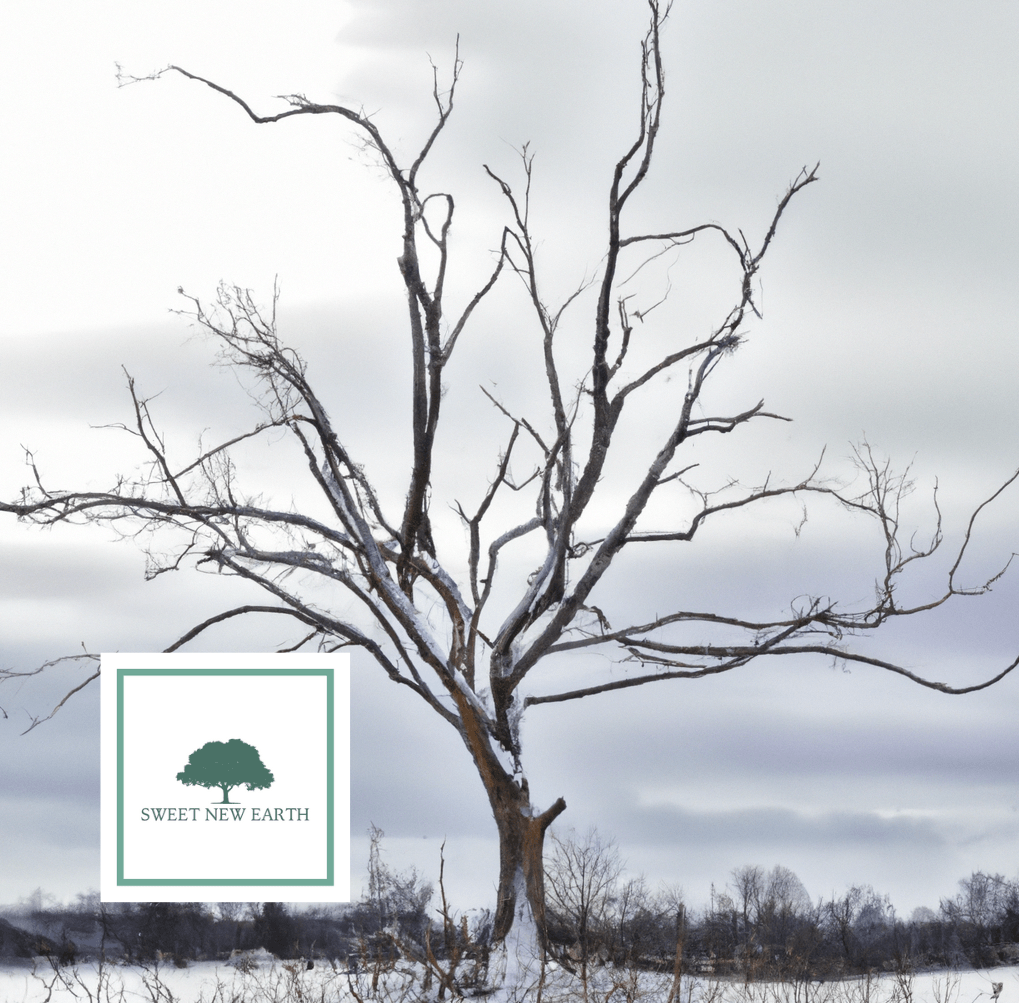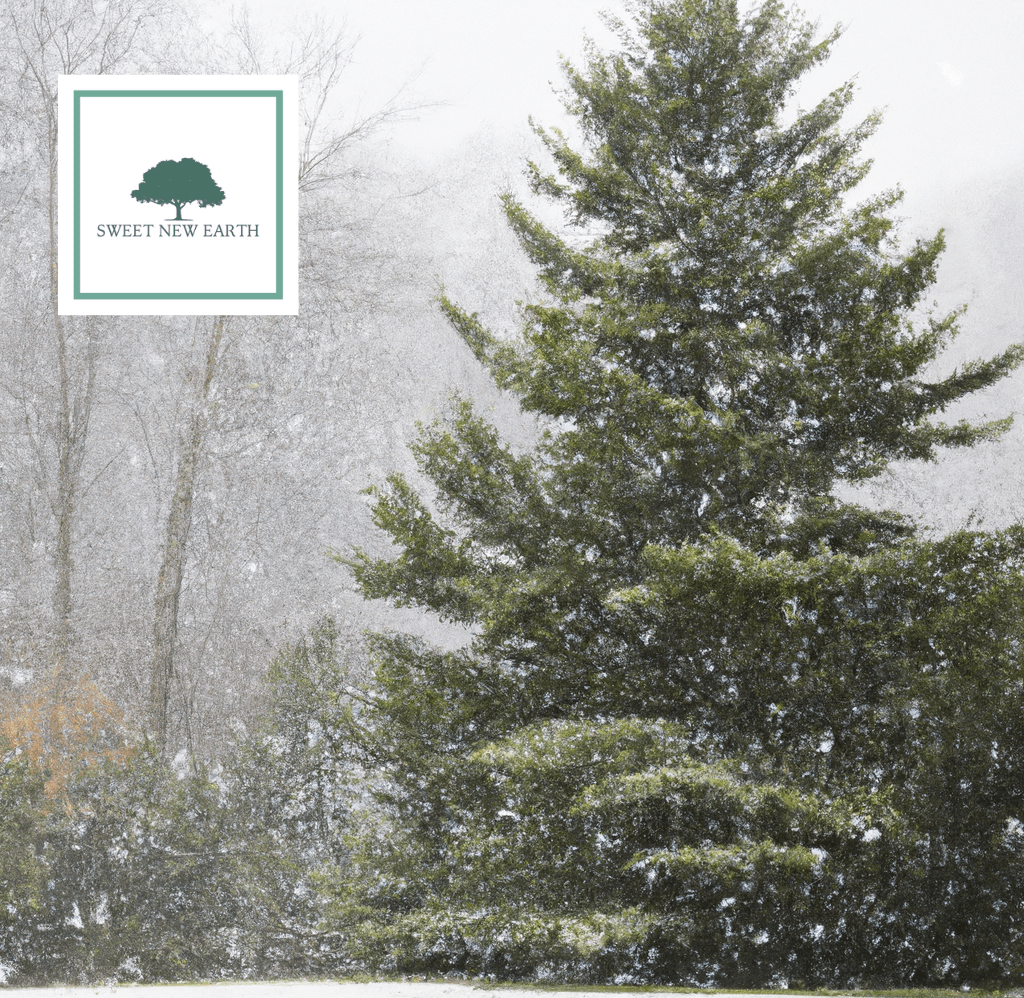Winter Tree Care: Top Tips for the Cold Season

Key Takeaways:
- Check out the winter tree care checklist we put together below.
- Your trees need to be taken care of whether it's the growing season or the winter season.
- Evergreens and deciduous trees have different care requirements.
- Cold stress and winter drought are different stressors unique to the winter season.

Don't Have Time To Read The Full Article? Check out this
winter tree care checklist.
Table of Contents
Winter Tree Care: What You Need To Know
Check out the need-to-know winter tree care tips below. We even provide a checklist at the bottom of the article to keep out all the guesswork!
If you aren't confident with taking care of your tree, you can call a local tree service to come out and help you grow.
Pruning Your Tree in the Winter
Winter is one of the best times to prune trees because most trees are dormant. You can remove any dead, damaged, or dying branches which will be easier to spot without the leaves. Be sure to use a great pair of tree loppers to avoid any further damage.
Establish the leader and the lowest permanent branch. Get those scaffold branches established.
You can establish other branches that will be temporarily lower than the lowest permanent branch while you head back to others. Be careful not to over-prune.
Protect the Young Trees from Freezing
When temperatures drop to freezing, young trees and shrubs are not going to survive without the proper protection. You need to be prepared because most young trees and even some tropical or subtropical species cannot withstand temperatures below 32 degrees Fahrenheit.
Susceptible trees should be covered with any of the following:
- Burlap
- Sheets
- Tarps
Whatever you have can cover the tree from the top and extends all the way to the ground. This will ensure any warmth is trapped inside the bag with the tree. If you need to, use frames or stakes to stop any contact between the cover and the tree's leaves.
If you have potted plants or trees then go ahead and move those to a more suitable, more protected location.
Mulching for Moisture Retention and Warmth
Cover the soil surrounding the tree with mulch. You can use inorganic or organic mulch (we use organic). Make sure your mulch is at least 3" away from the bark, 3" deep over the soil, and 3' in diameter around the tree.
Put mulch around the tree in the classic donate shape. We've said this before but don't make a mulch volcano up to the tree. You'll bury the root flare, and ask for rot to set in on the bark. Avoid. Avoid. Avoid.

Water Your Tree
Watering your tree in the late fall/early winter is just as important as ever. You still have to water trees every week or two, and if you are planting a tree in the late fall/early winter months, they need enough water to get established. Water newly planted trees until you know they are firmly in the soil.
If you winterized your irrigation system, this could get particularly troublesome but if you had to winterize your lines, there is a good chance you aren't in the best hardiness zone to be having winter trees.
If you overhead spray the trees, then you need to use at least 10 gallons of water per inch of your tree trunk's diameter. Start measuring at four and a half feet from the ground.
And when you water, make sure you water slowly. You want to ensure the water actually gets into and absorbed by the soil.
Warning!
Make sure you don't plant the tree too close to when the ground freezes over. Six weeks before the frost is typically the best bet. If you've already winterized your irrigation system, chances are it's too cold to water the soil.
Sometimes it's just too late to get a tree established. You aren't going to be spraying or watering trees in the deep winter months. Once the ground freezes or the temperature is less than 40 degrees F, you should not be watering.
If there is no snow or precipitation and the temperature is above 40 degrees F, you can water your tree every week fews.
Spraying
Spraying trees in late winter/early spring is important to set your tree up for a healthy year. A good plant spraying oil will suffice to get any overwintering insect eggs that they lay inside leaf buds or bark. For fungus, you can use a copper oxychloride spray.
These sprays are good applications for the protection and cleaning up of the tree. Do this throughout the winter, and your buds will explode in the spring.

What is cold stress?
Cold weather stress from the winter makes itself apparent in a number of different ways:
- Frost Cracking or Southwest Injury
- Early frosts on late growth
Frost Cracking or Southwest Injury
Rapid fluctuations in temperature between daytime and nighttime wreak havoc on the bark of trees. Cracks form along the outer bark and the inner wood.
Most of the time the tree will heal itself but the same cracks can occur over and over again which could present a major problem for the tree. You can wrap the tree in the winter or cover it in a frost blanket as we mentioned above to attempt to avoid this happening.
Early Frosts on Late Growth
If young or newly planted trees are properly established then early frosts present major problem. To avoid this, avoid planting the tree too late in the season.
If the tree gets too cold, then crystals will form within the tree that will rupture the cell walls on the new tips of the branches which would lead to death.
Try not to prune too early in the fall. It's best to wait until you know the tree has gone into dormancy because if you start cutting off branches too soon you will increase the risk of frost damage during the winter.
Winter Drought
Trees drying out in the wintertime is common, especially if the trees are evergreen.
If a tree is losing more water than it can absorb from the earth (because the earth is frozen), then it is in drought.
This happens in early spring because the early spring sun could be warming the tree while the ground beneath the tree is frozen solid.
The best way to avoid this is to apply mulch the way we described above. The mulch will work to seal in moisture for the tree, and as insulation to keep the tree roots warm.
Remove Breaking or Dead Branches
Sometimes tree branches die. During the winter, tree branches become more susceptible to breaking.
The wood hardens and turns brittle. A gust of wind comes in and breaks the branch off. This is mostly an issue with deciduous species.
Or, heavy ice and snow accumulation on the branches can weigh down and break the branches. This is common to both deciduous and evergreen trees.
Have you ever experienced an early snowstorm where the trees weren't yet dormant and the snow weighed down the tree so much (because of the foliage) that the tree actually fell? We've seen it.
But you can imagine this to a lesser effect across the winter.
Rodents
Don't forget the squirrels! Rodents can become desperate during the winter and do anything to forage for sparse food. Mice and rabbits chew through the bark and can girdle your trees.
You have to tread carefully with this because we happen to love wildlife and wouldn't want to do anything unethical. There are some non-harmful repellents you can post up to try to ward off the critters, and the way you mulch (if followed as described above) should allow you to check for mice.
Winter Tree Care Checklist
- Be sure to take care of your trees during the regular year, and get your tree healthy going into the colder winter months.
- Following winter, you should do a spring cleanup of your trees, treating any damage that you find.
- Research the trees you plan on planting, and check to make sure they match your location's hardiness zone.
- Aim to buy trees that can handle more stressful zones than the zone you currently reside.
- Prune your trees after they have entered dormancy in the fall
- Cover your newly planted trees where applicable
- Apply a fall fertilizer that promotes root growth
- Mulch around the base of the trees to retain the temperature in the soil as well as prevent moisture loss (mulch as described above)
- Keep an eye on the trees over the winter, make sure the rabbits or mice haven't gotten to the tree yet
- Remove any snow or ice that builds up on the branches to prevent the tree's branches from breaking
FAQs

If you enjoyed this article on winter tree care, be sure to check out some of our other guides on Sweet New Earth.
Join our community!
Join to receive guides, insights, and the latest gardening deals!
